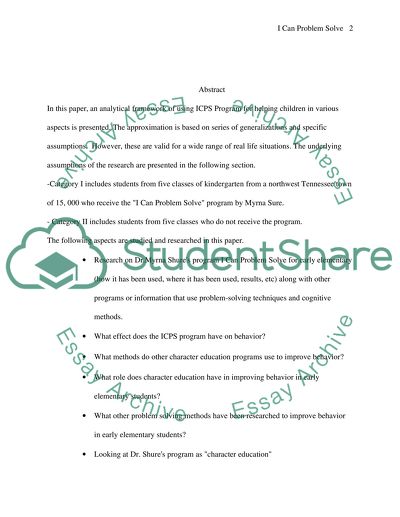Cite this document
(“Using the I Can Problem Solve Program in W.G. Rhea Elementary School Research Paper”, n.d.)
Using the I Can Problem Solve Program in W.G. Rhea Elementary School Research Paper. Retrieved from https://studentshare.org/education/1525709-using-the-i-can-problem-solve-program-in-wg-rhea-elementary-school-kindergarten
Using the I Can Problem Solve Program in W.G. Rhea Elementary School Research Paper. Retrieved from https://studentshare.org/education/1525709-using-the-i-can-problem-solve-program-in-wg-rhea-elementary-school-kindergarten
(Using the I Can Problem Solve Program in W.G. Rhea Elementary School Research Paper)
Using the I Can Problem Solve Program in W.G. Rhea Elementary School Research Paper. https://studentshare.org/education/1525709-using-the-i-can-problem-solve-program-in-wg-rhea-elementary-school-kindergarten.
Using the I Can Problem Solve Program in W.G. Rhea Elementary School Research Paper. https://studentshare.org/education/1525709-using-the-i-can-problem-solve-program-in-wg-rhea-elementary-school-kindergarten.
“Using the I Can Problem Solve Program in W.G. Rhea Elementary School Research Paper”, n.d. https://studentshare.org/education/1525709-using-the-i-can-problem-solve-program-in-wg-rhea-elementary-school-kindergarten.


